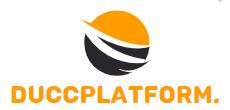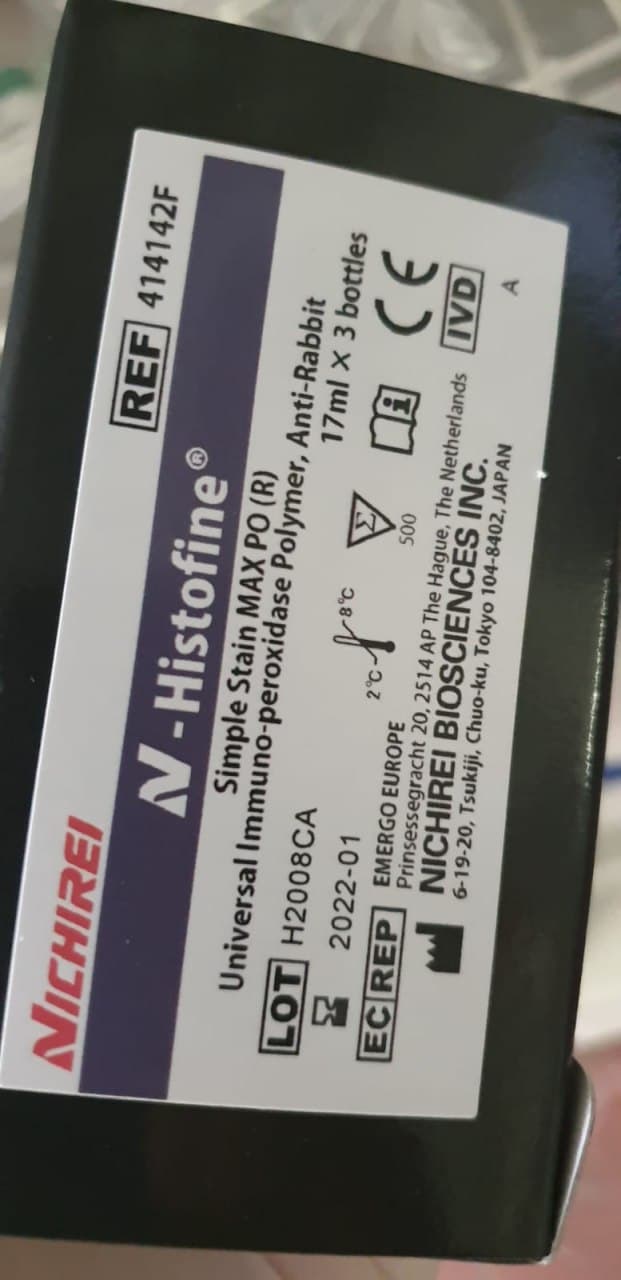Primary construction of the Aequorea victoria green-fluorescent protein.
Many cnidarians make the most of green-fluorescent proteins (GFPs) as energy-transfer acceptors in bioluminescence. GFPs fluoresce in vivo upon receiving vitality from both a luciferase-oxyluciferin excited-state advanced or a Ca(2+)-activated phosphoprotein. These extremely fluorescent proteins are distinctive because of the chemical nature of their chromophore, which is comprised of modified amino acid (aa) residues throughout the polypeptide. This report describes the cloning and sequencing of each cDNA and genomic clones of GFP from the cnidarian, Aequorea victoria.
The gfp10 cDNA encodes a 238-aa-residue polypeptide with a calculated Mr of 26,888. Comparison of A. victoria GFP genomic clones reveals three totally different restriction enzyme patterns which means that at the least three totally different genes are current within the A. victoria inhabitants at Friday Harbor, Washington. The gfp gene encoded by the lambda GFP2 genomic clone is comprised of at the least three exons unfold over 2.6 kb. The nucleotide sequences of the cDNA and the gene will help within the elucidation of structure-function relationships on this distinctive class of proteins.
Citations in CAS SciFinder to the rule-of-five (RO5) publication will exceed 1000 by year-end 2004. Trends within the RO5 literature explosion that may be discerned are the additional definitions of drug-like. This matter is explored when it comes to drug-like physicochemical options, drug-like structural options, a comparability of drug-like and non-drug-like in drug discovery and a dialogue of how drug-like options relate to medical success. Physicochemical options of CNS medicine and options associated to CNS blood-brain transporter affinity are briefly reviewed. Recent literature on options of non-oral medicine is reviewed and the way options of lead-like compounds differ from these of drug-like compounds is mentioned.
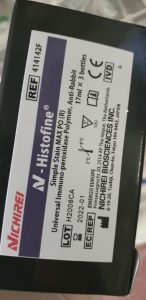
In vitro molecular mechanisms of bisphenol A motion.
Bisphenol A (BPA, 2,2-bis (4-hydroxyphenyl) propane; CAS# 80-05-7) is a chemical used primarily within the manufacture of polycarbonate plastic, epoxy resins and as a non-polymer additive to different plastics. Recent proof has demonstrated that human and wildlife populations are uncovered to ranges of BPA which trigger adversarial reproductive and developmental results in various totally different wildlife species and laboratory animal fashions. However, there are main uncertainties surrounding the spectrum of BPA’s mechanisms of motion, the tissue-specific impacts of exposures, and the essential home windows of susceptibility throughout which goal tissues are delicate to BPA exposures.
As a basis to handle a few of these uncertainties, this evaluation was ready by the “In vitro” professional sub-panel assembled in the course of the “Bisphenol A: An Examination of the Relevance of Ecological, In vitro and Laboratory Animal Studies for Assessing Risks to Human Health” workshop held in Chapel Hill, NC, Nov 28-29, 2006. The particular cost of this professional panel was to evaluation and assess the energy of the revealed literature pertaining to the mechanisms of BPA motion. The ensuing doc is an in depth evaluation of revealed research which have centered on the mechanistic foundation of BPA motion in various experimental fashions and an evaluation of the energy of the proof relating to the revealed BPA analysis.
In its present state, the database employs an easy-to-use, searchable interface for acquiring detailed information on the 109 at present recognized RNA modifications. Each entry gives the chemical construction, frequent identify and image, elemental composition and mass, CA registry numbers and index identify, phylogenetic supply, sort of RNA species wherein it’s discovered, and references to the primary reported construction willpower and synthesis. Though newly transferred in its entirety to The RNA Institute, the RNAMDB continues to develop with two notable additions, agmatidine and 8-methyladenosine, appended within the final 12 months.
) Anti-CD19-ScFv-CD28-CD3ζ (no marker) |
|
LVP1449 |
GenTarget |
1x10^8 IFU/ml x 200ul |
EUR 455 |
|
Description: Anti-CD19 CAR Lentivirus with human CD28 stimulatory domain, do not contain any selection marker. |
) CAR negative control: Anti-CD19-ScFv- CD28 (Puro) |
|
CAR-ctr4 |
GenTarget |
1x10^8 IFU/ml x 200ul |
EUR 276.5 |
|
Description: Anti-CD19 (CD28) CAR control lentivirus without activation domain, containing Puromycin selection |
) Anti-CD19-ScFv-4-1BB-CD3ζ (Bsd) |
|
LVP1441 |
GenTarget |
1x10^8 IFU/ml x 200ul |
EUR 455 |
|
Description: Anti-CD19 CAR Lentivirus with human 4-1BB (CD137) stimulatory domain, containing Blasticidin selection |
) Anti-CD19-ScFv-4-1BB-CD3ζ (Puro) |
|
LVP1440 |
GenTarget |
1x10^8 IFU/ml x 200ul |
EUR 455 |
|
Description: Anti-CD19 CAR Lentivirus with human 4-1BB (CD137) stimulatory domain, containing Puromycin selection. |
) Anti-CD19-ScFv-4-1BB-CD3ζ (no marker) |
|
LVP1444 |
GenTarget |
1x10^8 IFU/ml x 200ul |
EUR 455 |
|
Description: Anti-CD19 CAR Lentivirus with human 4-1BB (CD137) stimulatory domain, do not contain any selection marker. |
) Anti-CD19-ScFv-4-1BB-CD3ζ (GFP-Puro) |
|
LVP1442 |
GenTarget |
1x10^8 IFU/ml x 200ul |
EUR 455 |
|
Description: Anti-CD19 CAR Lentivirus with human 4-1BB (CD137) stimulatory domain, containing GFP-Puromycin dual selection. |
) Anti-CD19-ScFv-4-1BB-CD3ζ (RFP-Puro) |
|
LVP1443 |
GenTarget |
1x10^8 IFU/ml x 200ul |
EUR 455 |
|
Description: Anti-CD19 CAR Lentivirus with human 4-1BB (CD137) stimulatory domain, containing RFP-Puromycin dual selection. |
) CAR negative control: Anti-CD19-ScFv-4-1BB (Puro) |
|
CAR-ctr2 |
GenTarget |
1x10^8 IFU/ml x 200ul |
EUR 276.5 |
|
Description: Anti-CD19 (4-1BB) control lentivirus without activation domain, containing Puromycin selection |
 Lentivirus) Anti-CD19_CD20-ScFv- CD28-CD3ζ (Puro) Lentivirus |
|
LVP1645 |
GenTarget |
1x10^8 IFU/ml x 200ul |
EUR 553 |
|
Description: Bispecific Anti-CD19/CD20 CAR Lentivirus with human CD28 stimulatory domain, containing puromycin antibiotic selection |
 Lentivirus) Anti-CD19_CD20-ScFv- CD28-CD3ζ (No Select) Lentivirus |
|
LVP1644 |
GenTarget |
1x10^8 IFU/ml x 200ul |
EUR 553 |
|
Description: Bispecific Anti-CD19/CD20 CAR Lentivirus with human CD28 stimulatory domain, do not contain antibiotic selection |
 Lentivirus) Anti-CD19_CD20-ScFv- CD28-CD3ζ (GFP-Puro) Lentivirus |
|
LVP1646 |
GenTarget |
1x10^8 IFU/ml x 200ul |
EUR 553 |
|
Description: Bispecific Anti-CD19/CD20 CAR Lentivirus with human CD28 stimulatory domain, containing GFP-Puromycin dual selection |
 Reporter Jurkat Cell Line (CD19 SCFV-CD28-4-1BB-CD3ζ)) Anti-CD19 CAR / NFAT (Luciferase) Reporter Jurkat Cell Line (CD19 SCFV-CD28-4-1BB-CD3ζ) |
|
79853 |
BPS Bioscience |
2 vials |
EUR 10340 |
|
Description: Anti-CD19 CAR/NFAT-luciferase reporter Jurkat cell line is a double stable cell line expressing anti-CD19 CAR and NFAT-luciferase reporter. It is made from the anti-CD19 CAR lentivirus (BPS Bioscience #79851). The reporter cell line has been validated for anti CD19-CAR expression by FACS, and for luciferase reporter activation stimulated by target cells including CD19/CHO recombinant cell line can be used for primary screening and functional validation of anti-CD19 CAR construct and lentivirus before testing in primary T cells.
Anti-CD19 CAR consists of anti-CD19 scFv linked to 3rd generation CAR (Chimeric Antigen Receptor) containing CD28, 4-1BB co-stimulatory domains, and CD3ζ signaling domain.
|
 Lentivirus) Anti-CD19_CD20-ScFv-4-1BB-CD3ζ (Puro) Lentivirus |
|
LVP1642 |
GenTarget |
1x10^8 IFU/ml x 200ul |
EUR 553 |
|
Description: Bispecific Anti-CD19/CD20 CAR Lentivirus with human 4-1BB (CD137) stimulatory domain, containing puromycin antibiotic selection |
 Lentivirus) Anti-CD19_CD20-ScFv-4-1BB-CD3ζ (No Select) Lentivirus |
|
LVP1641 |
GenTarget |
1x10^8 IFU/ml x 200ul |
EUR 553 |
|
Description: Bispecific Anti-CD19/CD20 CAR Lentivirus with human 4-1BB (CD137) stimulatory domain, do not contain antibiotic selection |
 Lentivirus) Anti-CD19_CD20-ScFv-4-1BB-CD3ζ (GFP-Puro) Lentivirus |
|
LVP1643 |
GenTarget |
1x10^8 IFU/ml x 200ul |
EUR 553 |
|
Description: Bispecific Anti-CD19/CD20 CAR Lentivirus with human 4-1BB (CD137) stimulatory domain, containing GFP-Puromycin dual selection |
) Anti-CD19 CAR Lentivirus (CD19 ScFv-CD8-4-1BB-CD3ζ) |
|
78600 |
BPS Bioscience |
50 µl |
EUR 1150 |
|
Description: The anti-CD19 CAR lentiviruses are replication incompetent, HIV-based, VSV-G pseudotyped lentiviral particles that are ready to be transduced into almost all types of mammalian cells, including primary and non-dividing cells. These viruses constitutively express the ScFv portion of anti-CD19 (clone FMC63) linked to 2nd generation CAR (Chimeric Antigen Receptor) containing CD8 hinge, 4-1BB, and CD3ζ signaling domains. |
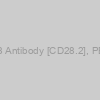 Anti-CD28 Antibody [CD28.2], PE-25Tests |
|
QAB37-PE-25Tests |
EnQuireBio |
25Tests |
EUR 169.2 |
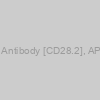 Anti-CD28 Antibody [CD28.2], APC-25Tests |
|
QAB37-APC-25Tests |
EnQuireBio |
25Tests |
EUR 188.4 |
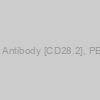 Anti-CD28 Antibody [CD28.2], PE-100Tests |
|
QAB37-PE-100Tests |
EnQuireBio |
100Tests |
EUR 270 |
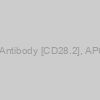 Anti-CD28 Antibody [CD28.2], APC-100Tests |
|
QAB37-APC-100Tests |
EnQuireBio |
100Tests |
EUR 310.8 |
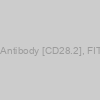 Anti-CD28 Antibody [CD28.2], FITC-25Tests |
|
QAB37-F-25Tests |
EnQuireBio |
25Tests |
EUR 157.2 |
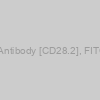 Anti-CD28 Antibody [CD28.2], FITC-100Tests |
|
QAB37-F-100Tests |
EnQuireBio |
100Tests |
EUR 240 |
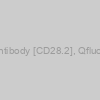 Anti-CD28 Antibody [CD28.2], Qfluor 630-100ug |
|
QAB37-QF630-100ug |
EnQuireBio |
100ug |
EUR 259.2 |
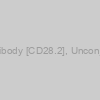 Anti-CD28 Antibody [CD28.2], Unconjugated-100ug |
|
QAB37-100ug |
EnQuireBio |
100ug |
EUR 169.2 |
) Anti-CD19 CAR Lentivirus (CD19 ScFv-CD8-4-1BB-CD3ζ; SIN Vector) |
|
78601 |
BPS Bioscience |
50 µl |
EUR 1150 |
|
Description: The anti-CD19 CAR lentiviruses are replication incompetent, HIV-based, VSV-G pseudotyped lentiviral particles that are ready to infect almost all types of mammalian cells, including primary and non-dividing cells. These viruses transduce the ScFv portion of anti-CD19 (clone FMC63) linked to 2nd generation CAR (Chimeric Antigen Receptor) containing CD8 hinge and transmembrane domains, 4-1BB and CD3ζ signaling domains .Note: This product transduces the same construct as the anti-CD19 CAR Lentivirus (CD19 ScFv-CD8-4-1BB-CD3ζ) (BPS Bioscience #78600), but differs in key aspects:78601 is constructed with a SIN lentivector while 78600 is not. 78601 does not contain an antibiotic for selection while 78600 contains a puromycin selection so the transduced cells can be selected with puromycin. |
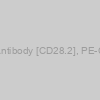 Anti-CD28 Antibody [CD28.2], PE-Cy7-25Tests |
|
QAB37-PE7-25Tests |
EnQuireBio |
25Tests |
EUR 199.2 |
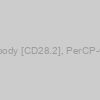 Anti-CD28 Antibody [CD28.2], PerCP-Cy5.5-100Tests |
|
QAB37-PCP55-100Tests |
EnQuireBio |
100Tests |
EUR 381.6 |
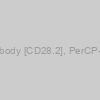 Anti-CD28 Antibody [CD28.2], PerCP-Cy5.5-25Tests |
|
QAB37-PCP55-25Tests |
EnQuireBio |
25Tests |
EUR 229.2 |
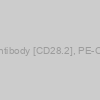 Anti-CD28 Antibody [CD28.2], PE-Cy7-100Tests |
|
QAB37-PE7-100Tests |
EnQuireBio |
100Tests |
EUR 340.8 |
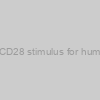 Anti-CD3/CD28 stimulus for human PBMC |
|
CT372 |
U-CyTech |
50 tests |
EUR 141.6 |
) Anti-CD19/CD22 Bispecific CAR Lentivirus (Clones FMC63/m971 ScFv-CD8-4-1BB-CD3ζ) |
|
78609 |
BPS Bioscience |
50 µl |
EUR 1095 |
|
Description: The anti-CD19/CD22 Bispecific CAR lentiviruses are replication incompetent, HIV-based, VSV-G-pseudotyped lentiviral particles that are ready to infect almost all types of mammalian cells, including primary and non-dividing cells. These viruses transduce the ScFv (single-chain variable fragments) of anti-CD19 (clone FMC63) and anti-CD22 (clone m971) linked to a 2nd generation CAR (Chimeric Antigen Receptor) containing CD8 hinge and transmembrane domains, and the 4-1BB and CD3ζ signaling domains. |
) CAR negative control: CD28-CD3ζ (Puro) |
|
CAR-ctr3 |
GenTarget |
1x10^8 IFU/ml x 200ul |
EUR 276.5 |
|
Description: CAR-T CD28 control lentivirus without targeting domain, containing Puromycin selection |
 Lentivirus) Anti-BCMA-ScFv- CD28-CD3ζ (Puro) Lentivirus |
|
LVP1651 |
GenTarget |
1x10^8 IFU/ml x 200ul |
EUR 553 |
|
Description: Anti-BCMA CAR Lentivirus with human CD28 stimulatory domain, containing Puromycin antibiotic selection. |
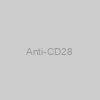 Anti-CD28 |
|
E40YR1618 |
EnoGene |
1 mg |
EUR 2960 |
|
Description: Available in various conjugation types. |
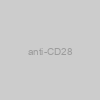 anti-CD28 |
|
YF-PA10780 |
Abfrontier |
50 ug |
EUR 435.6 |
|
Description: Mouse polyclonal to CD28 |
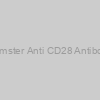 Hamster Anti CD28 Antibody |
|
20-abx137056 |
Abbexa |
-
Ask for price
-
Ask for price
|
|
|
|
 Lentivirus) Anti-h CD22-ScFv- CD28-CD3ζ (Puro) Lentivirus |
|
LVP1663 |
GenTarget |
1x10^8 IFU/ml x 200ul |
EUR 553 |
|
Description: Anti-h CD22 CAR Lentivirus with human CD28 stimulatory domain, containing Puromycin antibiotic selection. |
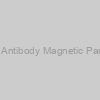 Absolute Mcell™ Anti-CD3/CD28 Antibody Magnetic Particles, 5.5 µm, DMF Filed, Sterile |
|
WHM-AB23-095 |
Creative Diagnostics |
2.5 mg |
EUR 850 |
 Lentivirus) Anti-h HER2-ScFv- CD28-CD3ζ (Puro) Lentivirus |
|
LVP1657 |
GenTarget |
1x10^8 IFU/ml x 200ul |
EUR 553 |
|
Description: Anti-h HER2 CAR Lentivirus with human CD28 stimulatory domain, containing Puromycin antibiotic selection. |
 Lentivirus) Anti-h TGFb-ScFv- CD28-CD3ζ (Puro) Lentivirus |
|
LVP1675 |
GenTarget |
1x10^8 IFU/ml x 200ul |
EUR 553 |
|
Description: Anti-h TGFb CAR Lentivirus with human CD28 stimulatory domain, containing Puromycin antibiotic selection. |
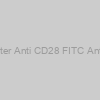 Hamster Anti CD28 FITC Antibody |
|
20-abx137135 |
Abbexa |
-
Ask for price
-
Ask for price
|
|
|
|
 Lentivirus) Anti-BCMA-ScFv- CD28-CD3ζ (No Select) Lentivirus |
|
LVP1650 |
GenTarget |
1x10^8 IFU/ml x 200ul |
EUR 553 |
|
Description: Anti-BCMA CAR Lentivirus with human CD28 stimulatory domain, does not contain any antibiotic selection. |
 Lentivirus) Anti-BCMA-ScFv- CD28-CD3ζ (GFP-Puro) Lentivirus |
|
LVP1652 |
GenTarget |
1x10^8 IFU/ml x 200ul |
EUR 553 |
|
Description: Anti-BCMA CAR Lentivirus with human CD28 stimulatory domain, containing GFP-Puromycin dual selection. |
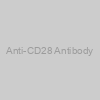 Anti-CD28 Antibody |
|
E38A8582 |
EnoGene |
100ug/100ul |
EUR 225 |
|
Description: Available in various conjugation types. |
 Anti-CD28 Antibody |
|
E38A8787 |
EnoGene |
100ug/100ul |
EUR 225 |
|
Description: Available in various conjugation types. |
 Anti-CD28 Antibody |
|
ER2001-42 |
HUABIO |
100ul |
EUR 189 |
|
|
|
Description: CD28 (Cluster of Differentiation 28) is one of the proteins expressed on T cells that provide co-stimulatory signals required for T cell activation and survival. T cell stimulation through CD28 in addition to the T-cell receptor (TCR) can provide a potent signal for the production of various interleukins (IL-6 in particular). CD28 is the receptor for CD80 (B7.1) and CD86 (B7.2) proteins. When activated by Toll-like receptor ligands, the CD80 expression is upregulated in antigen-presenting cells (APCs). The CD86 expression on antigen-presenting cells is constitutive (expression is independent of environmental factors). CD28 is the only B7 receptor constitutively expressed on naive T cells. Association of the TCR of a naive T cell with MHC:antigen complex without CD28:B7 interaction results in a T cell that is anergic. |
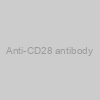 Anti-CD28 antibody |
|
STJ119563 |
St John's Laboratory |
100 µl |
EUR 332.4 |
|
Description: The protein encoded by this gene is essential for T-cell proliferation and survival, cytokine production, and T-helper type-2 development. Several alternatively spliced transcript variants encoding different isoforms have been found for this gene. |
 Anti-CD28 antibody |
|
STJ96609 |
St John's Laboratory |
200 µl |
EUR 236.4 |
|
Description: Rabbit polyclonal to CD28. |
 Anti-CD28 Antibody |
|
A00065 |
BosterBio |
0.1mg |
EUR 449 |
|
|
|
Description: Boster Bio Anti-CD28 Antibody (Catalog # A00065). Tested in ELISA, WB, IHC, IF applications. This antibody reacts with Human. |
 Reporter Jurkat Cell Line (CD19 SCFV-CD28 transmembrane motif)) Anti-CD19 CAR negative control/ NFAT (Luciferase) Reporter Jurkat Cell Line (CD19 SCFV-CD28 transmembrane motif) |
|
79854 |
BPS Bioscience |
2 vials |
EUR 1650 |
|
Description: Anti-CD19 CAR negative control/NFAT-luciferase reporter Jurkat cell line is a double stable cell line expressing anti-CD19 CAR negative control and NFAT-luciferase reporter. The anti-CD19 CAR negative control consists of anti-CD19 scFv linked to the CD28 transmembrane motif without any intracellular signaling domains. The reporter cell line has been validated for anti- CD19 expression by FACS, while the stimulation by target cells including CD19/CHO recombinant cell line has not activated the luciferase reporter gene in this cell line. The cell line can be used for the negative control of anti-CD19 CAR/Jurkat-NFAT cell line (BPS Bioscience, #79853)._x000D_ _x000D_ |
 Lentivirus) Anti-h CD22-ScFv- CD28-CD3ζ (No Select) Lentivirus |
|
LVP1662 |
GenTarget |
1x10^8 IFU/ml x 200ul |
EUR 553 |
|
Description: Anti-h CD22 CAR Lentivirus with human CD28 stimulatory domain, does not contain any antibiotic selection. |
 Lentivirus) Anti-h CD22-ScFv- CD28-CD3ζ (GFP-Puro) Lentivirus |
|
LVP1664 |
GenTarget |
1x10^8 IFU/ml x 200ul |
EUR 553 |
|
Description: Anti-h CD22 CAR Lentivirus with human CD28 stimulatory domain, containing GFP-Puromycin dual selection. |
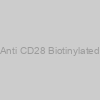 Hamster Anti CD28 Biotinylated Antibody |
|
20-abx137134 |
Abbexa |
-
Ask for price
-
Ask for price
|
|
|
|
 Lentivirus) Anti-h HLA-A2-ScFv- CD28-CD3ζ (Puro) Lentivirus |
|
LVP1669 |
GenTarget |
1x10^8 IFU/ml x 200ul |
EUR 553 |
|
Description: Anti-h HLA-A2 CAR Lentivirus with human CD28 stimulatory domain, containing Puromycin antibiotic selection. |
 Lentivirus) Anti-h HER2-ScFv- CD28-CD3ζ (No Select) Lentivirus |
|
LVP1656 |
GenTarget |
1x10^8 IFU/ml x 200ul |
EUR 553 |
|
Description: Anti-h HER2 CAR Lentivirus with human CD28 stimulatory domain, does not contain any antibiotic selection. |
 Lentivirus) Anti-h TGFb-ScFv- CD28-CD3ζ (No Select) Lentivirus |
|
LVP1674 |
GenTarget |
1x10^8 IFU/ml x 200ul |
EUR 553 |
|
Description: Anti-h TGFb CAR Lentivirus with human CD28 stimulatory domain, does not contain any antibiotic selection. |
 Lentivirus) Anti-h HER2-ScFv- CD28-CD3ζ (GFP-Puro) Lentivirus |
|
LVP1658 |
GenTarget |
1x10^8 IFU/ml x 200ul |
EUR 553 |
|
Description: Anti-h HER2 CAR Lentivirus with human CD28 stimulatory domain, containing GFP-Puromycin dual selection. |
 Lentivirus) Anti-h TGFb-ScFv- CD28-CD3ζ (GFP-Puro) Lentivirus |
|
LVP1676 |
GenTarget |
1x10^8 IFU/ml x 200ul |
EUR 553 |
|
Description: Anti-h TGFb CAR Lentivirus with human CD28 stimulatory domain, containing GFP-Puromycin dual selection. |
 Mouse anti-CD28 Antibody |
|
DL99412A-100ul |
DL Develop |
100 ul |
EUR 299 |
|
|
|
Description: T-cell-specific surface glycoprotein CD28; TP44; CD28 |
 Mouse anti-CD28 Antibody |
|
DL99412A-50ul |
DL Develop |
50 ul |
EUR 210 |
|
|
|
Description: T-cell-specific surface glycoprotein CD28; TP44; CD28 |
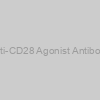 Anti-CD28 Agonist Antibody |
|
100182-1 |
BPS Bioscience |
50 µg |
EUR 335 |
|
Description: Recombinant monoclonal antibody recognizing human CD28. This antibody binds to CD28 on T cells and promotes T cell response. Not tested in other species. This antibody crosslinked with FcGR2B is useful for activation of CD27 costimulatory pathway in T cells. |
 Anti-CD28 Agonist Antibody |
|
100182-2 |
BPS Bioscience |
100 µg |
EUR 460 |
|
Description: Recombinant monoclonal antibody recognizing human CD28. This antibody binds to CD28 on T cells and promotes T cell response. Not tested in other species. |
 Lentivirus) CAR negative control:
CD28-CD3ζ (No Select) Lentivirus |
|
CAR-ctr6 |
GenTarget |
1x10^8 IFU/ml x 200ul |
EUR 276.5 |
|
Description: CAR (CD28) control lentivirus without targeting domain, does not contain any antibiotic selection |
 Lentivirus) CAR negative control:
CD28-CD3ζ (GFP-Puro) Lentivirus |
|
CAR-ctr8 |
GenTarget |
1x10^8 IFU/ml x 200ul |
EUR 276.5 |
|
Description: CAR (CD28) control lentivirus without targeting domain, containing GFP-Puromycin dual selection |
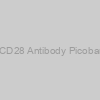 Anti-CD28 Antibody Picoband™ |
|
A00065-3 |
BosterBio |
10ug |
EUR 154 |
|
|
|
Description: Western blot, 0.25-0.5 μg/ml, Human;_x000D_Flow Cytometry, 1-3 μg/1x106 cells, Human;_x000D_Direct ELISA, 0.1-0.5 μg/ml, Human |
 Lentivirus) Anti-h HLA-A2-ScFv- CD28-CD3ζ (No Select) Lentivirus |
|
LVP1668 |
GenTarget |
1x10^8 IFU/ml x 200ul |
EUR 553 |
|
Description: Anti-h HLA-A2 CAR Lentivirus with human CD28 stimulatory domain, does not contain any antibiotic selection. |
 Antibody) Rabbit anti-CD28 (pY218) Antibody |
|
DL90184A-100ul |
DL Develop |
100 ul |
EUR 299 |
|
|
|
Description: T-cell-specific surface glycoprotein CD28; TP44; CD28 |
 Antibody) Rabbit anti-CD28 (pY218) Antibody |
|
DL90184A-50ul |
DL Develop |
50 ul |
EUR 209.3 |
|
|
|
Description: T-cell-specific surface glycoprotein CD28; TP44; CD28 |
 Antibody) Rabbit anti-CD28 (pY218) Antibody |
|
YLD1497-100ul |
Shanghai YL Biotech |
100 ul |
EUR 320 |
|
|
|
Description: Rabbit polyclonal antibody to CD28 (pY218) |
 Antibody) Rabbit anti-CD28 (pY218) Antibody |
|
YLD1497-50ul |
Shanghai YL Biotech |
50 ul |
EUR 200 |
|
|
|
Description: Rabbit polyclonal antibody to CD28 (pY218) |
 Lentivirus) Anti-h HLA-A2-ScFv- CD28-CD3ζ (GFP-Puro) Lentivirus |
|
LVP1670 |
GenTarget |
1x10^8 IFU/ml x 200ul |
EUR 553 |
|
Description: Anti-h HLA-A2 CAR Lentivirus with human CD28 stimulatory domain, containing GFP-Puromycin dual selection. |
 Syrian Hamster anti-CD28 Antibody |
|
DL99429A-100ul |
DL Develop |
100 ul |
EUR 299 |
|
|
|
Description: T-cell-specific surface glycoprotein CD28; TP44; CD28 |
 Syrian Hamster anti-CD28 Antibody |
|
DL99429A-50ul |
DL Develop |
50 ul |
EUR 210 |
|
|
|
Description: T-cell-specific surface glycoprotein CD28; TP44; CD28 |
) Anti-CD30 / TNFRSF8 Antibody (CD30/412) |
|
A1484-100 |
Biovision |
each |
EUR 574.8 |
) Anti-CD28 Reference Antibody (FR104) |
|
E24CHA679 |
EnoGene |
100 μg |
EUR 225 |
|
Description: Available in various conjugation types. |
) Anti-CD28 Agonist Antibody (Humanized) |
|
100186-1 |
BPS Bioscience |
50 µg |
EUR 345 |
|
Description: Recombinant monoclonal antibody recognizing human CD28. This antibody binds to CD28 on T cells and promotes T cell response. Not tested in other species. This antibody crosslinked with FcGR2B is useful for activation of CD27 costimulatory pathway in T cells. This antibody has been humanized to reduce immunogenicity and improve the therapeutic half-life. |
) Anti-CD28 Agonist Antibody (Humanized) |
|
100186-2 |
BPS Bioscience |
100 µg |
EUR 475 |
|
Description: Recombinant monoclonal antibody recognizing human CD28. This antibody binds to CD28 on T cells and promotes T cell response. Not tested in other species. This antibody has been humanized to reduce immunogenicity and improve the therapeutic half-life. |
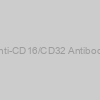 Anti-CD16/CD32 Antibody |
|
E38A8954 |
EnoGene |
100ug/100ul |
EUR 225 |
|
Description: Available in various conjugation types. |
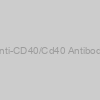 Anti-CD40/Cd40 Antibody |
|
A00068-1 |
BosterBio |
100ug/vial |
EUR 352.8 |
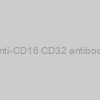 Anti-CD16+CD32 antibody |
|
MO16A(V100) |
ImmunoStep |
100 ug |
EUR 60 |
 Anti-CD16+CD32 antibody |
|
MO16A(V25) |
ImmunoStep |
25 ug |
EUR 60 |
 Anti-CD16+CD32 antibody |
|
MO16B(V100) |
ImmunoStep |
100 ug |
EUR 60 |
 Anti-CD16+CD32 antibody |
|
MO16B(V25) |
ImmunoStep |
25 ug |
EUR 60 |
 Anti-CD16+CD32 antibody |
|
MO16CFB(V100) |
ImmunoStep |
100 ug |
EUR 60 |
 Anti-CD16+CD32 antibody |
|
MO16CFB(V25) |
ImmunoStep |
25 ug |
EUR 60 |
 Anti-CD16+CD32 antibody |
|
MO16F(V100) |
ImmunoStep |
100 ug |
EUR 60 |
 Anti-CD16+CD32 antibody |
|
MO16F(V25) |
ImmunoStep |
25 ug |
EUR 60 |
 Anti-CD16+CD32 antibody |
|
MO16F(V500) |
ImmunoStep |
500 ug |
EUR 60 |
 Anti-CD16+CD32 antibody |
|
MO16PE(V100) |
ImmunoStep |
100 ug |
EUR 60 |
 Anti-CD16+CD32 antibody |
|
MO16PE(V25) |
ImmunoStep |
25 ug |
EUR 60 |
 Anti-CD16+CD32 antibody |
|
MO16PP(V100) |
ImmunoStep |
100 ug |
EUR 60 |
 Anti-CD16+CD32 antibody |
|
MO16PP(V25) |
ImmunoStep |
25 ug |
EUR 60 |
 Anti-CD16+CD32 antibody |
|
MO16PP5.5(V100) |
ImmunoStep |
100 ug |
EUR 60 |
 Anti-CD16+CD32 antibody |
|
MO16PP5.5(V25) |
ImmunoStep |
25 ug |
EUR 60 |
 Anti-CD16+CD32 antibody |
|
MO16PU(V100) |
ImmunoStep |
100 ug |
EUR 60 |
 Anti-CD16+CD32 antibody |
|
MO16PU(V500) |
ImmunoStep |
500 ug |
EUR 60 |
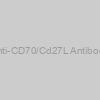 Anti-CD70/Cd27L Antibody |
|
A02853 |
BosterBio |
100ul |
EUR 476.4 |
|
Description: Rabbit Polyclonal CD70/Cd27L Antibody. Validated in WB and tested in Human. |
 Rat anti-CD16/CD32 Antibody |
|
DL99452A-100ul |
DL Develop |
100 ul |
EUR 299 |
|
|
|
Description: CD32; FCG2; IGFR2; Low affinity immunoglobulin gamma Fc region receptor II-b; IgG Fc receptor II-b; CDw32; Fc-gamma RII-b; Fc-gamma-RIIb; FcRII-b; CD32 |
 Rat anti-CD16/CD32 Antibody |
|
DL99452A-50ul |
DL Develop |
50 ul |
EUR 210 |
|
|
|
Description: CD32; FCG2; IGFR2; Low affinity immunoglobulin gamma Fc region receptor II-b; IgG Fc receptor II-b; CDw32; Fc-gamma RII-b; Fc-gamma-RIIb; FcRII-b; CD32 |
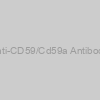 Anti-CD59/Cd59a Antibody |
|
A00914 |
BosterBio |
100ug/vial |
EUR 400.8 |
) Anti-CD22 CAR Lentivirus (Clone m971 ScFv-CD8-4-1BB-CD3ζ) |
|
78608 |
BPS Bioscience |
50 µl |
EUR 1095 |
|
Description: The anti-CD22 CAR lentiviruses are replication incompetent, HIV-based, VSV-G-pseudotyped lentiviral particles that are ready to infect almost all types of mammalian cells, including primary and non-dividing cells. These viruses transduce the ScFv (single-chain variable fragment) of anti-CD22 (clone m971) linked to a 2nd generation CAR (Chimeric Antigen Receptor) containing CD8 hinge and transmembrane domains, and the 4-1BB and CD3ζ signaling domains (below). |
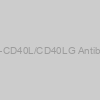 Anti-CD40L/CD40LG Antibody |
|
A01114-1 |
BosterBio |
100ug/vial |
EUR 352.8 |
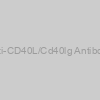 Anti-CD40L/Cd40lg Antibody |
|
A01114-2 |
BosterBio |
100ug/vial |
EUR 400.8 |
 Anti-CD40L/CD40LG Antibody |
|
A01114-3 |
BosterBio |
100ug/vial |
EUR 352.8 |
 Anti-CD16/CD32, Rat IgG2b Antibody |
|
A1106-200 |
Biovision |
each |
EUR 874.8 |
) Recombinant Anti-CD33 x Anti-CD16 x CD123 Trispecific Antibody (Single-chain Triplebody) |
|
SCTB-104 |
Creative Biolabs |
200μg |
Ask for price |
|
Description: A trispecific antibody that is expressed as a single chain with three scFv units, two distal binding sites for CD33 and CD123, a central site for CD16. This BsAb can retarget NK cells to tumor cells. It is designed for the research of Acute myeloid leukemia (AML) therapy. |
) Anti-EMMPRIN / CD147 Reference Antibody (Centocor anti-CD147) |
|
E24CHA651 |
EnoGene |
100 μg |
EUR 225 |
|
Description: Available in various conjugation types. |
) Anti-OX2R / CD200R1 Reference Antibody (Janssen anti-CD200R1) |
|
E24CHA149 |
EnoGene |
100 μg |
EUR 225 |
|
Description: Available in various conjugation types. |
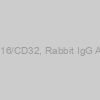 Anti-CD16/CD32, Rabbit IgG Antibody |
|
A1107-200 |
Biovision |
each |
EUR 874.8 |
-MC-MMAF ADC) Anti-CD28 (lumretuzumab)-MC-MMAF ADC |
|
ADC-W-2278 |
Creative Biolabs |
1mg |
Ask for price |
|
Description: This ADC product is comprised of an anti-CD28 monoclonal antibody conjugated via a MC linker to MMAF |
-SMCC-DM1 ADC) Anti-CD28 (lumretuzumab)-SMCC-DM1 ADC |
|
ADC-W-2276 |
Creative Biolabs |
1mg |
Ask for price |
|
Description: This ADC product is comprised of an anti-CD28 monoclonal antibody conjugated via a SMCC linker to DM1 |
-SPDB-DM4 ADC) Anti-CD28 (lumretuzumab)-SPDB-DM4 ADC |
|
ADC-W-2277 |
Creative Biolabs |
1mg |
Ask for price |
|
Description: This ADC product is comprised of an anti-CD28 monoclonal antibody conjugated via a SPDB linker to DM4 |
) Anti-CD44v4 Antibody (Clone CD44v4/1219) |
|
A1526-100 |
Biovision |
each |
EUR 574.8 |
) Anti-CD44v6 Antibody (Clone CD44v6/1246) |
|
A1527-100 |
Biovision |
each |
EUR 574.8 |
) Anti-CD44v9 Antibody (Clone CD44v9/1459) |
|
A1528-100 |
Biovision |
each |
EUR 574.8 |
) Anti-CD20 CAR Lentivirus (Clone Leu-16 ScFv-CD8-4-1BB-CD3ζ) |
|
78606 |
BPS Bioscience |
50 µl |
EUR 1095 |
|
Description: The anti-CD20 CAR lentiviruses are replication incompetent, HIV-based, VSV-G-pseudotyped lentiviral particles that are ready to infect almost all types of mammalian cells, including primary and non-dividing cells. These viruses transduce the ScFv (single-chain variable fragment) of anti-CD20 (clone Leu-16) linked to a 2nd generation CAR (Chimeric Antigen Receptor) containing CD8 hinge and transmembrane domains, and the 4-1BB and CD3ζ signaling domains . |
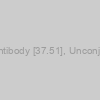 Anti-CD28 Antibody [37.51], Unconjugated-25ug |
|
QAB99-25ug |
EnQuireBio |
25ug |
EUR 138 |
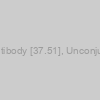 Anti-CD28 Antibody [37.51], Unconjugated-100ug |
|
QAB99-100ug |
EnQuireBio |
100ug |
EUR 178.8 |
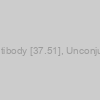 Anti-CD28 Antibody [37.51], Unconjugated-500ug |
|
QAB99-500ug |
EnQuireBio |
500ug |
EUR 279.6 |
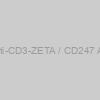 Goat anti-CD3-ZETA / CD247 Antibody |
|
dAP-3199 |
Angio Proteomie |
50ug |
EUR 264.6 |
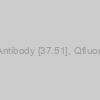 Anti-CD28 Antibody [37.51], Qfluor 630-100ug |
|
QAB99-QF630-100ug |
EnQuireBio |
100ug |
EUR 270 |
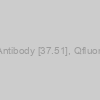 Anti-CD28 Antibody [37.51], Qfluor 630-500ug |
|
QAB99-QF630-500ug |
EnQuireBio |
500ug |
EUR 372 |
-MC-MMAF ADC) Anti-CD28 (lulizumab pegol)-MC-MMAF ADC |
|
ADC-W-2332 |
Creative Biolabs |
1mg |
Ask for price |
|
Description: This ADC product is comprised of an anti-CD28 Monovalent antibody conjugated via a MC linker to MMAF |
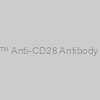 resDetect™ Anti-CD28 Antibody ELISA Kit |
|
CRS-A014 |
ACROBIOSYSTEMS |
96tests |
EUR 652.7 |
|
|
|
Description: Similar to CD3 antibody, CD28 antibodies also can be used to stimulate the proliferation and activation of T cells in CIK cell therapy. Under the cooperation of other cytokines, such as IL2 and IL1a, CIK cells with rapid proliferation, high tumoricidal activity, broad tumor killing spectrum and non-MHC-restricted tumor killing characteristics are generated,which has significant effects on the treatment of cancer, chronic leukemia, liver disease and neurological diseases. Obviously, It is necessary to control the residues of raw materials in the final cell therapy products. |
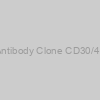 Anti-CD30/ TNFRSF8 Antibody Clone CD30/412, Unconjugated-20ug |
|
943-MSM1-P0 |
EnQuireBio |
20ug |
EUR 279.6 |
-SMCC-DM1 ADC) Anti-CD28 (lulizumab pegol)-SMCC-DM1 ADC |
|
ADC-W-2330 |
Creative Biolabs |
1mg |
Ask for price |
|
Description: This ADC product is comprised of an anti-CD28 Monovalent antibody conjugated via a SMCC linker to DM1 |
-SPDB-DM4 ADC) Anti-CD28 (lulizumab pegol)-SPDB-DM4 ADC |
|
ADC-W-2331 |
Creative Biolabs |
1mg |
Ask for price |
|
Description: This ADC product is comprised of an anti-CD28 Monovalent antibody conjugated via a SPDB linker to DM4 |
The RNA Modification Database is staying up-to-date with important enhancements being ready for inclusion throughout the subsequent 12 months and the next 12 months. The expanded future position of The RNA Modification Database shall be to function a major info portal for researchers throughout the whole spectrum of RNA-related analysis. Most not too long ago, partly pushed by NIH roadmap initiatives, issues have arisen as to what tool-like means within the seek for chemical instruments to probe biology house.

